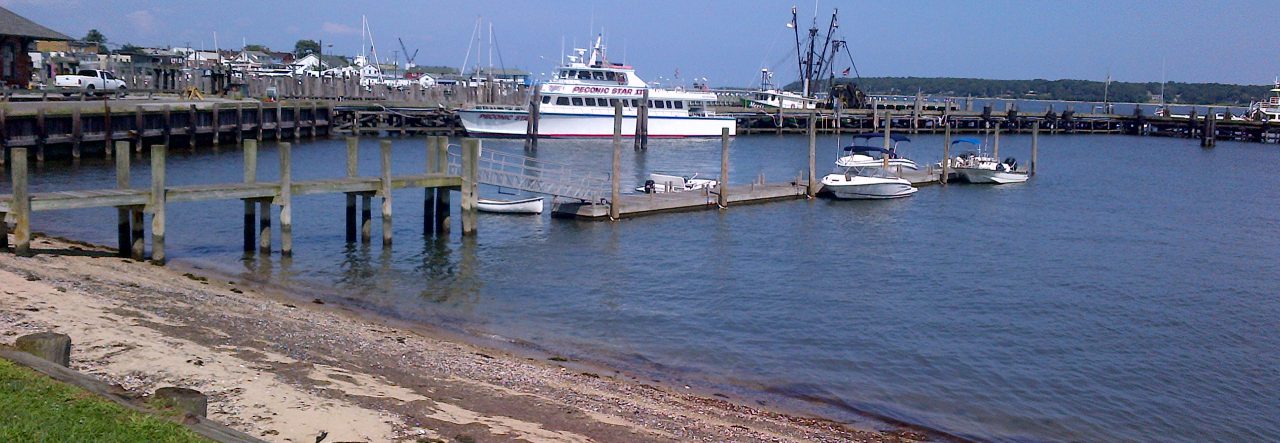Although we now know the North Fork of Long Island as Wine Country with over 60 vineyards, originally this area was a center for trade, fishing, and whaling. Greenport was important to this maritime area because its deep harbor rarely froze over. Additionally, the potential of the fertile land of the interior was also developed by early settlers for a great variety of agricultural purposes.
Eastern Long Island was home to tribes of the Algonquin nation: the Corchaugs, Shinnecocks, and the Montauks, as well as relatives of the Pequots of New England and on Shelter Island, the Manhaset tribe. These were all descendants of the Paleo-Indians who entered North America during the ice age by crossing the Bering Strait from North and Central Asia. They entered Alaska by accessing an over land and ice bridge (Beringia) and into the Americas: North, Central and South America as well and eventually the Caribbean Islands.
The farming tradition of North Fork predates the early European settlers who purchased the land in the summer of 1640 from the group of Native Americans related to the Pequot of New England, who lived in Corchaug (now Cutchogue). They grew corn and domesticated tomatoes, potatoes, and other crops indigenous to the Americas. The fish and shellfish of Peconic Bay was an important source of food and as well as currency or “wampum”.
On the South Fork, Native American tribes such as the Montauks were also hunters and whalers. Whales that washed up on the beach were butchered and whales were hunted offshore with rowboats. The land was purchased in 1648 by the governors of Connecticut Colony and New Haven Colony from the Montauk Indians, in large part for small drills to make wampum, used as currency. The land was then sold for about £30 to Puritan settlers. The towns of Greenport and Sag Harbor which became sister village whaling centers.[8]
The descendants of founding families of the East End remain an integral part of the community and surnames such as Horton, Budd, Conklin, Wells, Tuthill, Purrier, Terry, Corwin, Akerly, Corey, Arnold, Youngs, Hallock and Haines carry on.
Although the Connecticut-facing North Fork is part of the state of New York in geographic terms, its culture and history are embedded in its New England roots which continue to be accessed by the Cross South Ferry which connects Orient Point to New London Connecticut.
New Haven supervised Southold until 1662, and it was under the Connecticut Colony until 1674. Both colonies sought to establish the town as a theocracy. New Haven did not permit other churches to operate at all, while Connecticut allowed freedom of religion.
In 1650, the Treaty of Hartford established a boundary between Dutch and English claims, roughly through Oyster Bay, dividing the Dutch colony to the west and the English to the east. When the Dutch took control of the colony of New York in 1673, the English-settled eastern towns, including Southold, East Hampton, and Southampton, refused to submit; the Dutch attempted to force the matter by arms, and the colonists of the towns repelled them, with assistance from Connecticut. When New York was retaken by the English in 1674, these eastern towns preferred to remain part of Connecticut until 1676.
Up until the late 19th century, you could only reach Greenport by private car or by boat until the Long Island Rail Road extended its line on the North Shore to Greenport. This was the turning point for the area when summer vacationers began to travel in mass to this maritime and agricultural destination.



